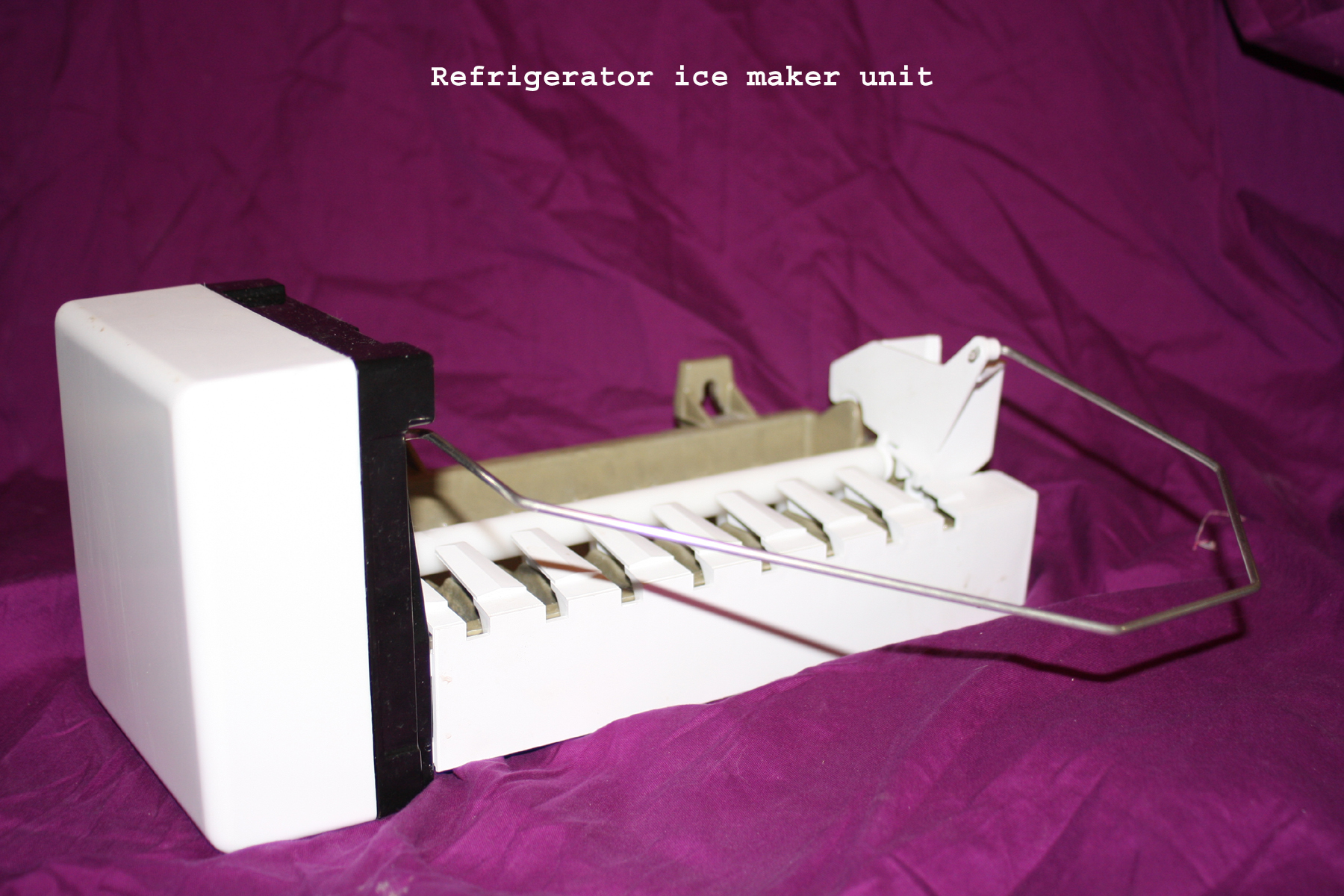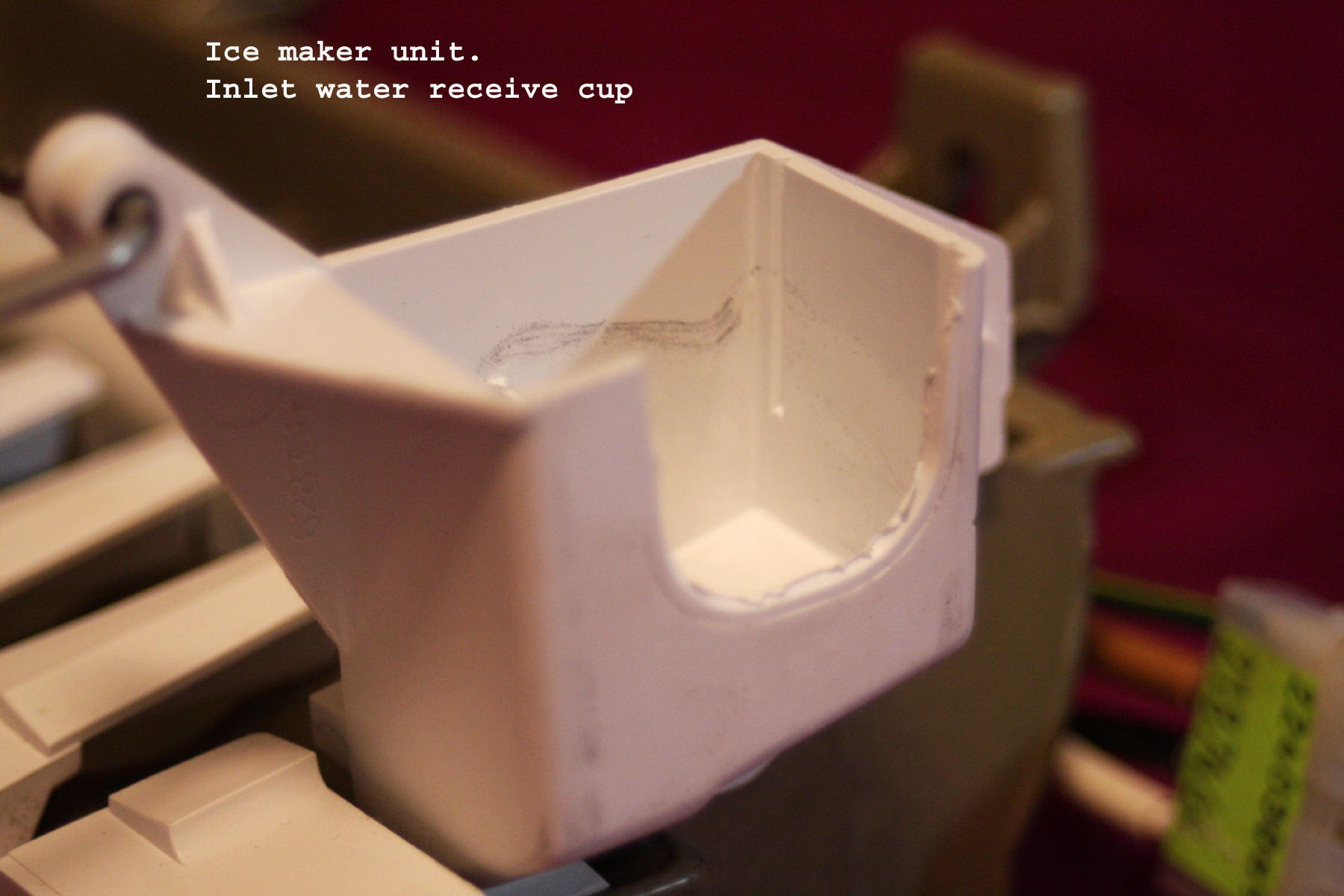
Shared Knowledge
"How to: Replace a Refrigerator Ice Maker"
5 August 2009
Summary: So your trusty refrigerator ice maker suddenly has stopped making ice. In the following, I define how you can diagnose the problem and replace the complete ice maker unit, if required, or at least increase your knowledge as to why a service call is going to cost so much.
Non-functional ice maker potential causes:
- the lever on ice maker is set in the up position telling the ice maker to "not make ice" or
- water to ice maker has been shut off (usually a small valve under the kitchen sink controls this) or
- the water supply line is crimped in some way not allowing water into the ice maker when commanded to do so or
- the temperature of the freezer compartment is set too high such that the temperature sensor in the ice maker is not commanding the ice maker motor to ever turn on or
- after installing a new ice maker, there has not been enough time for the freezer compartment to cool down enough for ice maker temperature sensor to engage and start the ice maker motor or
- water inlet solenoid valve in behind refrigerator, at bottom, is defective and not letting water into the ice maker when commanded by the ice maker or
- the wiring harness is defective (rare but mice have a way of chewing through anything).
How an ice maker is supposed to work:
Power is supplied to the ice maker unit through a connector in the back of the freezer compartment. Once power is inside the ice maker unit, it is routed through the lever switch, then a temperature sensor and then to a small motor. If the ice maker lever is up, power never gets to the ice maker motor. If the freezer is not cold enough to make ice, power never gets to the ice maker motor.
If the ice lever is down and the freezer is cold enough to make ice, the ice maker motor begins to rotate. As the gear on the motor shaft rotates, it commands the water inlet solenoid to allow water into the ice maker. With water in the ice maker, the ice maker temperature sensor (inlet water raised sensor temperature) turns off the ice maker motor. Once the temperature sensor in the ice maker gets to freezing, the ice maker motor is turned on and it rotates around moving teeth down into the ice tray, kicking the ice cubes out into the ice bucket below. If the ice bucket is full and the lever is pushed up, the timer motor stops. If the ice maker lever is still down after new ice is added, the motor continues to rotate and again commands the water inlet valve to fill the ice maker water tray for another cycle.
Fault Diagnosis
(1) Visually inspect. Ice maker lever in down position? Nothing stuck in ice maker ice tray? Ice maker valve supply line valve turned on? No crimped water supply line ? Freezer compartment cold? Ice cold? Power chord coming out of ice maker completely inserted in refrigerator connector?
With nothing obvious wrong, the problem is most likely the ice maker unit or the water inlet solenoid.
(2) Open freezer compartment and on front of ice maker, remove the cover. This cover is plastic and simply pressed on and it should pull off using just your hands, no tools.
(3) Put the ice maker lever in the full up position and close the freezer door. Now wait for an hour or so for the freezer compartment to get below freezing. If you have a refrigerator thermometer, insert it into the freezer compartment.
(4) Open the freezer door and check your thermometer if you placed one there. Should read well below freezing. Now drop the ice maker lever and watch the geared wheel on the front of the ice maker. It should immediately begin to rotate and you should hear the water inlet solenoid "click" open letting water into the ice maker. If the wheel does turn but you do not hear a click and once the wheel has stopped turning, when you stick your finger into the ice maker water tray, there is no water, your problem is either a broken water inlet valve or something is preventing water through the valve such as water not turned on to the ice maker or a crimped water supply line.
(5) If when you drop the ice maker lever, the geared wheel on the ice maker does not rotate even a small amount, the ice maker motor or associated temperature sensor is defective and you will have to replace the ice maker unit. Unfortunately, you can not buy just components for an ice maker unit, you have to buy the whole unit. Ice maker units are about $100 - $120 at an appliance parts store.
Replacement of the water inlet solenoid at the back bottom of the refrigerator is not covered here but this is not a very difficult job but you must make sure all water connections are properly sealed or water will eventually leak in behind your refrigerator and potentially do damage to your floor.
Replacing the complete ice maker unit:
Replacement of the complete ice maker unit is not difficult at all. In my case, only 2 screws held the ice maker to the wall of the freezer compartment and the connector out of the unit easily unplugged and plugged into a connector in the back of the freezer compartment.
As with any appliance part replacement, make sure you have the model number, serial number and defective part with you when you visit the appliance parts store.
Ok, you have removed old unit and installed new one. Remember that freezer compartment must be well below freezing for the ice maker unit to "turn on" and make ice. Thus, after installation, do not expect the new ice maker to immediately make ice. Close the freezer door and wait. After 30 or 40 minutes, you should hear the click of the inlet valve and water moving into the ice maker. With that sound, you know you are golden.

Final notes:
Safety. As with all home repairs where electricity is involved, error on the side of safety. Unplug the refrigerator when you disconnect the ice maker from the refrigerator and when you connect the new one. Same holds for replacement of the water inlet valve, should you have to replace that.
Ice maker adjustment set screw. On the ice maker, there is one adjustable screw, set on the side of the unit. There is nothing in the refrigerator manual about this set screw or in the instructions that came with the new ice maker unit. I suspect this set screw adjusts the ice maker temperature sensor and thus you might want to "play" with this set screw on the "defective" ice maker while it is still installed, to see if the ice maker motor will begin to move after some adjustment of the set screw. Other than temperature sensor adjustment, the only other thing I can think the set screw might affect is the speed that the motor turns. Slowing the motor down would allow more water to be supplied to the ice tray, if the ice cubes are too small.